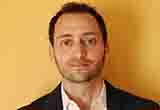 In the past decade, medicine has quickly entered a new era in which morning rounds take place in front of a computerized set of lab values and histories are taken from electronic medical records. As verbal exchanges and eye contact become increasingly rare, the patient, as described by Madeline Drexler, morphs into an “oddly invisible prop: part artist’s model, part one-night stand, heard but not seen…exposed, invisible, dehumanized.” [1] As a consequence, medical schools, subject to the pressures to produce not only skilled but also compassionate physicians, have almost ubiquitously adopted “empathy” as a core competency required for graduation. The combination of these forces has created a difficult predicament: how do we approach a task as complex and elusive as “teaching” empathy in a time where face-to-face interactions have evolved into a charming antiquated gesture.
In the past decade, medicine has quickly entered a new era in which morning rounds take place in front of a computerized set of lab values and histories are taken from electronic medical records. As verbal exchanges and eye contact become increasingly rare, the patient, as described by Madeline Drexler, morphs into an “oddly invisible prop: part artist’s model, part one-night stand, heard but not seen…exposed, invisible, dehumanized.” [1] As a consequence, medical schools, subject to the pressures to produce not only skilled but also compassionate physicians, have almost ubiquitously adopted “empathy” as a core competency required for graduation. The combination of these forces has created a difficult predicament: how do we approach a task as complex and elusive as “teaching” empathy in a time where face-to-face interactions have evolved into a charming antiquated gesture.
Partly in an effort to improve interpersonal skills, schools have begun incorporating medical humanities into the core or the elective curriculum. Exploring the relationships of various branches of the humanities with the medical world, these courses are vital in creating a balanced and complete medical education. However, reading and writing within the confines of a medical school is almost uniformly just that—medical. We read to model or to oppose the descriptions of medical encounters; at the same time, through narrative medicine, we write patient stories into existence, training our minds to enter the minds of others. These courses are an integral foundation for the training of medical students, but when it comes to teaching empathy, are they the only effective intervention? And should “training” empathy be our only end goal?
Preliminary research into the factors affecting interpersonal sensitivity has yielded interesting results. A series of five experiments by Kidd and Costano recently published in Science magazine examined the relationship between fiction and empathy (through the use of theory of mind testing). [2-4] The results of this investigation revealed that it is the reading of literary fiction—the type of fiction that challenges the reader with character nuances and complexity—that improves the understanding of others most. [5] Although this research is still in its infancy and only a transient effect has so far been demonstrated, inquiries such as these are important in prompting us to re-evaluate the current medical and pre-medical educational system in which literary fiction is absent by design.
For the past two years, I have been teaching a literature in medicine course to first through to fourth year medical students. The rules of the class are simple: no medical literature; everything else works. Every month, forty of us come together to discuss Junot Diaz’s stories of love and infidelity while pulling apart the boundaries of Tea Obreht’s magic and reality. Although this class has never undergone theory of mind testing, I have no doubt that they would “ace” it. What I have found instead is that as these students navigate their way through medical school, their group relationship with fiction frames the hospital experience in an altogether new way. What emerges, then, is learning that is beyond measure.
With each meeting, the discussions grow richer as fiction forces us to enter the intricacies of the lives of others and the group dynamic pushes the limits of the worlds that any of us are comfortable understanding individually. We do not explore medical texts; yet we necessarily find ourselves juxtaposing our protagonists’ experiences to our hospital interactions and, in doing so, see patient stories in a new light. And it is through reading and discussion that we learn to relate to unorthodox narratives—a skill both difficult and indispensable in patient interactions.
Competing interests: No conflict of interests to disclose.
Daniel Marchalik, MD, Georgetown University Hospital, Department of Urology.
References:
1. Drexler M: 18 Stethoscopes, 1 Heart Murmur and Many Missed Connections, The New York Times (ed New York), 2011, pp D1
2. Shamay-Tsoory SG, Aharon-Peretz J: Dissociable prefrontal networks for cognitive and affective theory of mind: a lesion study. Neuropsychologia 45:3054-67, 2007
3. Mar R, Oatley K, Peterson K: Exploring the link between reading fiction and empathy: Ruling out individual differences and examining outcomes. Communications 34:407-428, 2009
4. Kidd DC, Castano E: Reading literary fiction improves theory of mind. Science 342:377-80, 2013
5. Zunshine L: Why we read fiction: theory of mind and the novel. Columbus, Ohio State University Press, 2006
